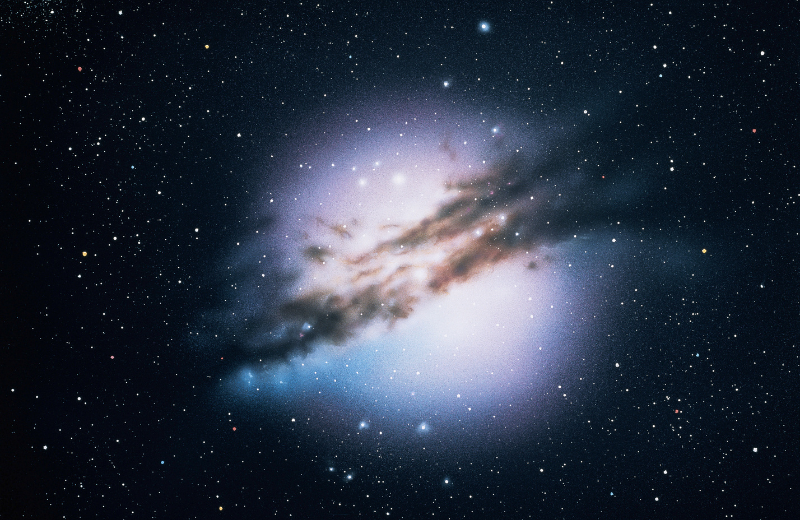Whether you're an amateur astronomer or just curious about the stars, Centaurus is a constellation worth knowing about. In this guide, you'll explore what Centaurus is, its significance in mythology, and its place in the celestial sphere.
Jump to:
Recommended for you!
Best SellersWhat is the Centaurus Constellation?
Centaurus is one of the largest and brightest constellations in the southern hemisphere. It’s rich in stars and deep-space objects, making it a popular focus for those interested in astronomy. The constellation Centaurus represents a centaur, a half-human, half-horse figure from Greek mythology, adding an intriguing layer of cultural significance.
What Does Centaurus Look Like?

Centaurus is a sprawling constellation, covering a large area of the sky. Its brightest stars form the outline of a centaur, an image that's more imaginative than literal when you’re stargazing. If you're lucky enough to view Centaurus under clear conditions, you'll notice the distinct shape of this mythical figure.
The constellation also contains some notable celestial objects, including Alpha Centauri, the closest star system to Earth. Alongside it is Beta Centauri, another bright star. These two stars form part of the centaur’s front legs in the sky. The constellation is packed with beautiful nebulae and galaxies, making it an exciting target for those with a telescope.
The Centaurus Constellation Myth
The mythology behind Centaurus is just as fascinating as the stars themselves. In Greek myth, the centaur is a creature with the upper body of a man and the lower body of a horse. The Centaurus constellation is often associated with Chiron, the wise centaur who mentored heroes such as Achilles and Hercules.
Chiron was known for his wisdom, healing abilities, and immortality. Unlike the wild and unruly centaurs in other Greek myths, Chiron was kind, knowledgeable, and nurturing. It is said that the gods placed him in the sky as a constellation to honour his contributions to humanity. This tale brings a deeper meaning to the Centaurus constellation and gives us a greater appreciation of its significance in the night sky.
What is the Meaning of the Centaurus Constellation?
The meaning of the Centaurus constellation goes beyond its mythological roots. As a centaur, it symbolises duality — the combination of the wild, animalistic side with human intelligence and wisdom. Centaurus represents balance, a union of strength and intellect.
In astrology, although Centaurus is not a part of the traditional zodiac signs, its themes of mentorship, wisdom, and healing echo throughout its mythology. The constellation's position in the sky and its powerful stars make it a symbol of knowledge and protection.
How to Pronounce Centaurus
Centaurus is pronounced "sen-TOR-us," with emphasis on the second syllable.
Centaurus' Stars

Centaurus is home to many stars, but two in particular stand out: Alpha Centauri and Beta Centauri.
- Alpha Centauri is the third-brightest star in the night sky and is part of a three-star system. It’s famous for being the closest star system to Earth, located just over four light years away. It consists of three stars: Alpha Centauri A, Alpha Centauri B, and Proxima Centauri. Proxima Centauri is the closest individual star to Earth.
- Beta Centauri, also known as Hadar, is the second-brightest star in Centaurus. It’s a blue giant, much further away from Earth but still a striking feature of the constellation.
Other notable stars include:
- Delta Centauri: This is a blue-white star located about 400 light years from Earth. It's part of the front legs of the centaur in the constellation and is one of the brighter stars, making it relatively easy to spot with the naked eye.
- Mu Centauri: A white giant star located roughly 480 light years away from Earth. Mu Centauri is another prominent star in the constellation, contributing to the overall brilliance of Centaurus in the night sky.
- Menkent (Theta Centauri): A bright orange giant located about 60 light years from Earth. Menkent is the fourth-brightest star in Centaurus and easily visible to the naked eye.
- Epsilon Centauri: Another bright star within the constellation, it is a blue-white giant located around 430 light years away. It adds to the impressive array of stars that make up the constellation Centaurus.
Nebulae in the Centaurus Constellation
Centaurus is home to several deep-sky objects, including nebulae and galaxies. Among the most notable is Centaurus A, a galaxy situated approximately 13 million light-years away. It’s one of the brightest galaxies in the night sky and is particularly interesting due to its unusual structure, which features both elliptical and spiral characteristics.
Also found in Centaurus is the Omega Centauri, the largest and brightest globular cluster visible from Earth. It contains millions of stars, making it a favourite among astronomers with powerful telescopes. If you have the chance to view Centaurus under the right conditions, these nebulae are a sight to behold.
Finding Centaurus in the Sky

Centaurus is best viewed from the southern hemisphere, where it dominates the night sky. If you're in Australia, South Africa, or parts of South America, you're in a prime spot to view this impressive constellation. Here's how to find Centaurus and enjoy its stellar sights.
Locating Centaurus
To find Centaurus, begin by locating the Southern Cross, one of the most prominent constellations in the southern hemisphere. Centaurus wraps around the Southern Cross, making it easier to identify. Once you've found the Southern Cross, follow its arms to spot Alpha and Beta Centauri, two of the brightest stars in the Centaurus constellation.
Viewing Centaurus with Binoculars or a Telescope
- With Binoculars: You can easily see the bright stars Alpha and Beta Centauri with binoculars, enhancing your view of their distinct brilliance.
- With a Telescope: A telescope will allow you to see deeper into Centaurus, revealing nebulae and even the galaxy Centaurus A. This is especially rewarding for those interested in viewing distant galaxies and deep-sky objects.
The Best Viewing Times
Centaurus is best observed from March to May, when it is high in the night sky. To enjoy the clearest view, find a dark area away from light pollution and let your eyes adjust to the night sky.
Recommended for you!
Best SellersFun Facts About Centaurus
Centaurus holds a fascinating place in both mythology and astronomy. Here are a few interesting facts about this bright and bold constellation:
- Centaurus is home to Proxima Centauri, the closest star to the solar system.
- The constellation spans over 1,060 square degrees, making it one of the largest constellations in the sky.
- Centaurus A, located within the constellation, is an active galaxy and one of the most studied in astronomy.
- The Omega Centauri cluster within Centaurus is estimated to be around 12 billion years old.
Study Astronomy for £29
The Centaurus constellation is a stunning and significant part of the night sky, offering beauty and rich mythology. If you're inspired to delve deeper into the wonders of astronomy, why not explore the Astronomy Diploma Course with Centre of Excellence? Whether you're a beginner or someone with more experience, this course will guide you through everything you need to know about the stars, constellations, and galaxies like Centaurus. And for a limited time, you can enrol for just £29!













